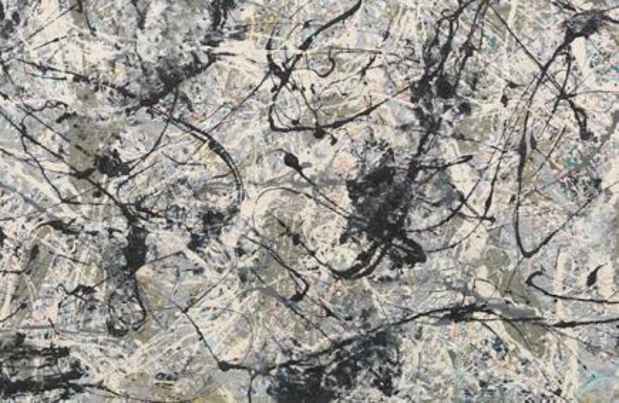“Epic Abstraction: Pollock to Herrera Epic Abstraction”
The Metropolitan Museum of Art

This event has ended.
Galleries 917–925, Lila Acheson Wallace Wing,
Floor 2
Epic Abstraction: Pollock to Herrera begins in the 1940s and extends into the 21st century to explore large-scale abstract painting, sculpture, and assemblage through more than 50 works from The Met collection, a selection of loans, and promised gifts and new acquisitions. Iconic works from The Met collection, such as Jackson Pollock’s classic “drip” painting Autumn Rhythm (1950) and Louise Nevelson’s monumental Mrs. N’s Palace (1964–77) will be shown in conversation with works by international artists, such as Japanese painter Kazuo Shiraga and the Hungarian artist Ilona Keserü. The exhibition is punctuated with special loans of major works by Helen Frankenthaler, Carmen Herrera, Shiraga, Joan Snyder, and Cy Twombly.
“The Met’s great holdings of post-war art include some of the most celebrated examples of Abstract Expressionism. This exhibition is an important reinterpretation of a core area of the Museum’s collection as it expands beyond the familiar to include fresh and perhaps surprising perspectives of artists who have adopted, adapted, and even critiqued the precedents established by the well-known New York school,” said Max Hollein, Director of the Museum. “These monumental works also offer a powerful—even mesmerizing—experience.”
In the wake of unprecedented destruction and loss of life during World War II, many painters and sculptors working in the 1940s grew to believe that traditional easel painting and figurative sculpture no longer adequately conveyed the human condition. In this context, numerous artists, including Barnett Newman, Pollock, and others associated with the so-called New York School, were convinced that abstract styles—often on a large scale—most meaningfully evoked contemporary states of being. Many of the artists represented in Epic Abstraction worked in large formats not only to explore aesthetic elements of line, color, shape, and texture but also to activate scale’s metaphoric potential to evoke expansive—“epic”—ideas and subjects, including time, history, nature, the body, and existential concerns of the self.
Highlights of the exhibition will include a group of paintings by Pollock and a selection of his experimental sketchbook drawings from the late 1930s and early 1940s that demonstrate the artist’s exploration of automatic techniques and his interest in Jungian psychoanalysis. Major works by Franz Kline, Willem de Kooning, and Clyfford Still will expand the representation of mid-century American painting, while a space devoted to Mark Rothko’s meditative compositions will offer a powerful immersion in color, feeling, and sensation. These heralded Abstract Expressionists will be joined by Hedda Sterne and Philippines native Alfonso Ossorio, who were also associated with the movement. A significant ink painting from 1966 by Japanese artist Inoue Yūichi will illuminate the international practice of large-scale calligraphic abstraction. Monumental painterly canvases by Joan Mitchell—a lyrical retort to Pollock’s freighted whipping drips—and Mark Bradford—whose Duck Walk (2016) marks a recent addition to the collection—will evoke Abstract Expressionism’s long and profound legacy.
The exhibition will also feature a gallery of works by the next generation of artists, including Herrera, Ellsworth Kelly, Robert Mangold, Alejandro Puente, and Anne Truitt, who tamed the highly pitched emotionalism of Abstract Expressionism by working in the hard edge and minimalist styles that came to define modern art in the 1960s and 1970s. An adjacent gallery with key works by Helen Frankenthaler and Morris Louis will explore the reductive technique of staining canvas in painting.
The exhibition will include a range of major works composed of found objects and repurposed materials, including the installation’s centerpiece, Nevelson’s Mrs. N’s Palace, Chakaia Booker’s Raw Attraction (2001), and Thornton Dial’s elegiac Shadows of the Field (2008), which evokes the history of American slavery. The installation design will establish artistic and conceptual connections between the artists on view while encouraging visitors to contemplate individual works of art in isolation or in dialogue with others in their midst.
Epic Abstraction: Pollock to Herrera is curated by Randall Griffey, Curator in the Department of Modern and Contemporary Art at The Met.
In conjunction with the exhibition, a concert in the MetLiveArts Sight and Sound series, “Abstraction in Music and Art,” will feature Leon Botstein and The Orchestra Now performing works by the radical modernist Anton Webern and experimental composer Morton Feldman, who mirrored the Abstract Expressionist painters and took his inspiration from their art. The performance, on Sunday, May 19, 2019, at 2 p.m. in The Met Fifth Avenue’s Grace Rainey Rodgers Auditorium, will be preceded by a discussion accompanied by musical excerpts performed alongside on-screen artworks. Tickets start at $30; Bring the Kids for $1 tickets are also available (metmuseum.org/sightandsound).
Media
Schedule
from December 17, 2018 to May 31, 2019